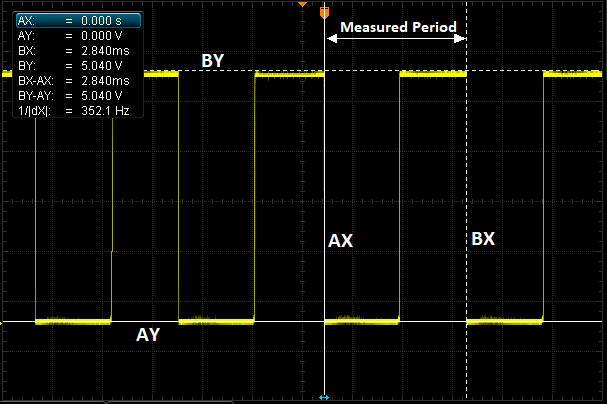Bill,
No, I haven’t played with the autotune other than what was requested. I’m happy to a do a lot more test. I’ll try some D gain with the auotune this weekend. Anything else you would like me to try?
The RPM sensor is Align Beast X (The one Chris recommends) with Vcc and GND swapped and pull up 360ohm resistor between Vcc and signal. (As per this RPM Sensor Wiki thread. RPM Sensor Wiki - Knowledge Share). I have had it on the oscilloscope and works fine and it outputs 0 to 5v steps like this picture with a passing magnet.

Hex Cube black params V4.0.6
BRD_PWM_COUNT = 4
Relay_Pin = -1
RPM_Max = 10000
RPM_Min = 10
PRM_Min_Qual = 0.5
RPM_Pin = 54 (Sensor plugged into Aux 5)
RPM_Scaling= 1
RPM_Type = 2
RPM displays -1
I have had msg “RPM: failed to attach to Pin255” Not sure what that means.
If I can get the RPM sensor working, I"ll be able test the autotune on the 770 this weekend too.
Regards,
Steve
Update:
Got RPM hall sensor working tonight but still get warning message “RPM: failed to attach to Pin255”